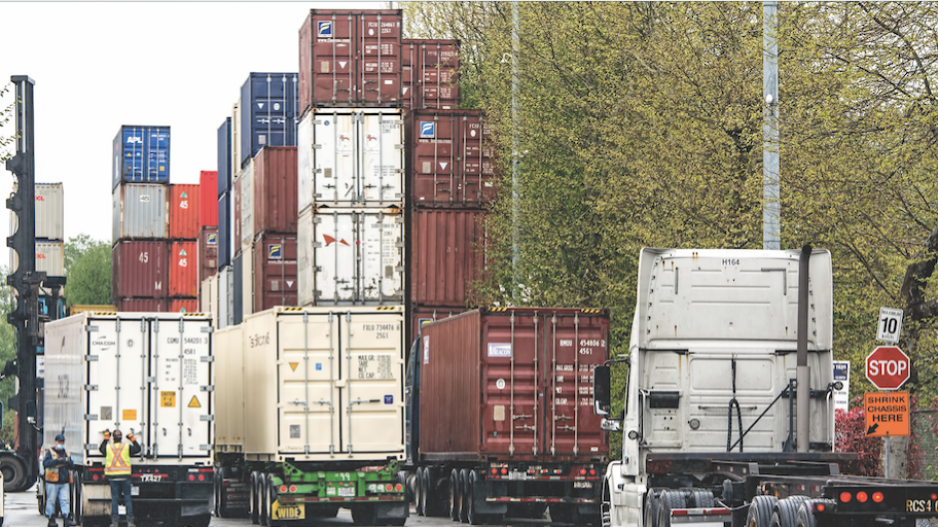With analysts poking holes in Canada’s latest import-export numbers as being overly rosy and concealing potential weaknesses in several sectors in the COVID era, what can Ottawa and the provinces do to improve the country’s export trade in 2021?
The answer, in many ways, is fundamental: exports depend on the health of companies whose products are being exported, so the health of Canada’s overall economy needs to be a priority for government – and not only in a big-picture way.
Omar Allam, founder and CEO of trade consultancy Allam Advisory Group, said that by trying to capture every market in the world in a transactional, cookie-cutter way without accounting for whether Canadian products fit the markets being targeted, Ottawa’s trade policy approach has been too broad.
“We need to take stock of our strengths in every sector, and we have to be honest about it. Looking at federal and provincial trade services, there’s a lot of overlap and duplication that causes agencies to trip over each other. We have to know which industries we have are strong enough, and do we have specific plans for them to execute?”
Allam added that some of the lack of understanding of what bullets Canada holds in its trade-policy chamber began to show through during the pandemic when many businesses with the global export aspirations were shown to have internal financial weaknesses that caused them to dial back on exports.
And when those weaknesses are not detected and export ambitions downgraded after being backed by government trade agencies, it hurts the overall Canadian brand, he said.
“There are companies that are suffering because of the pandemic, but then there are those that are suffering because they aren’t doing well, period. We have to find where our strength is. We have to find out who are champions are.”
Canada West Foundation trade expert Carlo Dade agrees.
Dade, the director of the foundation’s Trade & Investment Centre, said the lack of data on agricultural sector producers and products has meant that the government has no clear understanding of who in what sectors are struggling with producing/exporting in the COVID era.
The lack of data also extends to the agricultural industry’s capacity and investments, where a lack of clarity is a major impediment for Ottawa and the provinces in figuring out how to increase trade in 2021.
Then there’s the issue of managing relationships with Canada’s top trade partners. Dade noted that ties with the United States should stabilize under a Joe Biden White House, so the attention should now turn to China.
“With the new administration in Washington, we lose the risk of the 2 a.m. tweet,” Dade said. “People said before that a market can’t be shut down by a 2 a.m. tweet, and, of course, we’ve found out that it can. So the issue then becomes, how is our second largest market?”
China currently accounts for about 13% of Canadian exports and could grow to 15% in the next few years. That would give China a larger share of Canada’s export pie than the next three biggest trade partners combined.
With some commodities like peas and canola heavily dependent on China and others like wood products, aquaculture and energy also looking in Asia’s direction, Dade said Ottawa and the provinces have to look at the examples of places like Australia, where heavy political antagonism has not prevented Canberra from joining the China-led Regional Comprehensive Economic Partnership (RCEP) trade bloc.
“Australia and New Zealand both have problems with their relationships with China,” Dade said. “But you don’t hear about elements of the relationship that are working. With us, we don’t have those elements; we are relying on MOUs and side agreements. We are not managing the China relationship in terms of trade our competitors.”
Another example is the recent signing of a trade and investment treaty between China and the European Union – even as a visit by Chinese Foreign Minister Wang Yi to Europe late last year was met with heavy scrutiny from several European governments.
“Other countries are walking and chewing gum at the same time; they are dealing with human rights issues and political tensions, pushing back on China,” Dade said. “But no one has ripped up their trade agreements.”
Back on the home front, something that officials cannot overlook – once travel restrictions are lifted – is the resumption of foot traffic across Canadian borders, especially with the United States.
Graham Robins, president and CEO of A&A Customs Brokers, said a lot of e-commerce and smaller volume trade coincides with the flow of people across borders. As such, initiatives such as the NEXUS quick entry program have a tremendous impact on cross-border trade with the United States, and the program’s resumption should not be overlooked if full-scale trade is to resume.
“There’s a big issue with the NEXUS offices, which have basically been closed all this time,” Robins said. “So if your NEXUS has expired in the last 10 to 12 months, can you imagine the backlog once things resume? It’s the same with your passport. It’s important to not get stuck in massive queues if you want things to get back to normal again.” •




